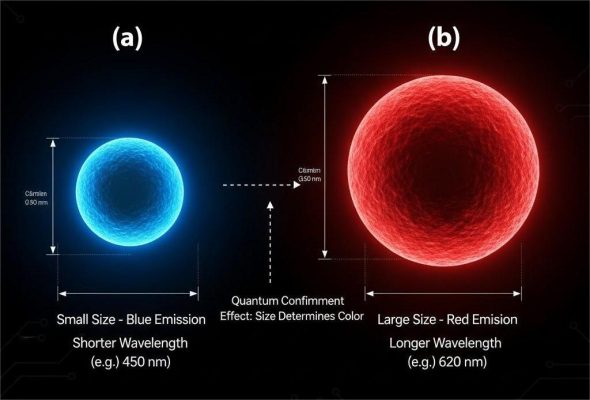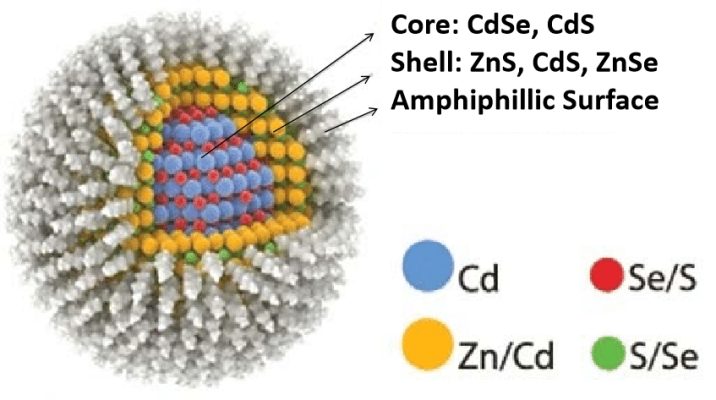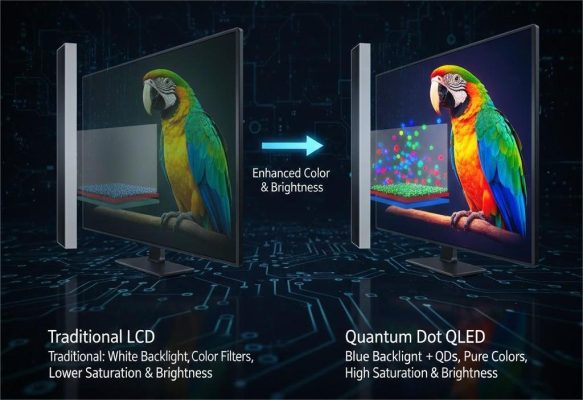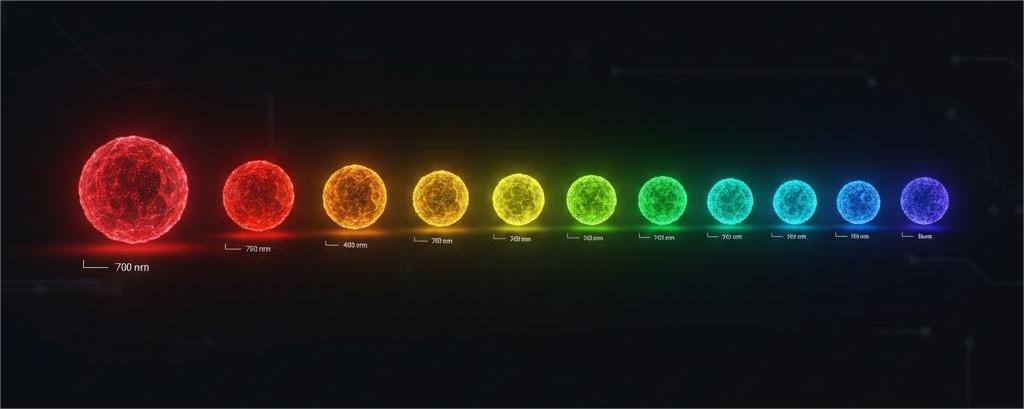Ultrananaotech, ULTRANANOTECH
Quantum Dots: Illuminating the Future of Technology
Introduction
In the realm of nanotechnology, few innovations hold as much promise and fascination as quantum dots. These tiny semiconductor particles, typically ranging from 2 to 10 nanometers in size, exhibit unique optical and electronic properties that are revolutionizing various fields from electronics to medicine. Let’s delve into the captivating world of quantum dots, exploring their structure, applications, and the exciting future they promise.
Understanding Quantum Dots
Quantum dots can be classified based on several key characteristics, including their composition, size, and structure. Here’s a detailed classification of quantum dots:
Based on Composition:
II-VI Quantum Dots:
Example Materials: Cadmium selenide (CdSe), Cadmium sulfide (CdS), Cadmium telluride (CdTe).
These quantum dots are composed of elements from group II (cadmium) and group VI (selenium, sulfur, tellurium)of the periodic table.
III-V Quantum Dots:
Example Materials: Indium arsenide (InAs), Gallium arsenide (GaAs), Indium phosphide (InP).
These quantum dots consist of elements from group III (indium, gallium) and group V (arsenic, phosphorus) of the periodic table.
IV-VI Quantum Dots:
Example Materials: Lead sulfide (PbS), Lead selenide (PbSe).
These quantum dots are composed of elements from group IV (lead) and group VI (sulfur, selenium) of the periodic table.
Based on Size:
Quantum dots are often classified according to their diameter, which directly affects their optical and electronic properties due to quantum confinement effects.
(a) Small Quantum Dots:
Diameter typically ranges from 2 to 5 nanometers.
Emit higher-energy photons (e.g., blue light).
Example: Small cadmium-based quantum dots like CdSe.
(b) Large Quantum Dots:
Diameter typically ranges from 5 to 10 nanometers.
Emit lower-energy photons (e.g., red light).
Example: Large lead-based quantum dots like PbS.

Fig: (a) Represents Small Quantum Dots
(b) Represents Large Quantum Dots
Based on Structure:
Quantum dots can also be classified based on their structural configuration, which impacts their electronic properties and applications.
Core-Shell Quantum Dots:
Consist of a core material surrounded by a shell of another semiconductor material. Shell material can modify the quantum dot’s optical properties and enhance stability.
Example: CdSe/ZnS quantum dots, where CdSe forms the core and ZnS forms the shell.

Fig: Showing the core and shell made up of CdSe and ZnS respectively.
Alloyed Quantum Dots:
Composed of a mixture of elements within the core, rather than distinct core-shell structure. Alloying can tune the bandgap and emission wavelength of the quantum dot.
Example: InGaAs quantum dots, combining indium (In) and gallium (Ga) in varying ratios.
Based on Applications:
Quantum dots can also be classified based on their intended application, as different compositions and sizes are optimized for specific uses.
- Display Applications:
Quantum dots have made significant strides in display technologies, enhancing the color gamut and brightness of displays compared to conventional LCDs. Quantum dot displays (QLED) utilize quantum dots as color converters for backlighting, offering vibrant colors and improved energy efficiency.

Fig: Quantum dots used in display to enhance colour and brightness
- Biological Applications:
Due to their excellent optical properties, quantum dots are employed in biological imaging and diagnostics. They can label specific biomolecules or cells for precise detection and tracking in medical research and diagnostics, offering superior brightness and photostability over organic dyes.
- Energy Applications:
Quantum dots show promise in next-generation solar cells. Quantum dots tailored for solar cells, where their tunable bandgap allows efficient conversion of sunlight into electricity. They can be tuned to absorb specific wavelengths of light more efficiently, potentially improving the overall efficiency and cost-effectiveness of solar energy conversion.
- Lighting:
In lighting applications, quantum dots are used to produce high-quality, tunable light sources. They can be integrated into LEDs to generate light across a wide spectrum, enabling applications from general lighting to specialized medical lighting.
- Quantum Computing:
In the burgeoning field of quantum computing, quantum dots are being explored as qubits (quantum bits), the fundamental units of information processing in quantum computers. Their ability to confine single electrons and manipulate their spin states makes them a promising candidate for quantum information processing.
How They Work:
Quantum dots function by confining the motion of electrons and holes within a three-dimensional space, creating discrete energy levels. This confinement alters the bandgap of the material, enabling precise control over the wavelengths of light they emit or absorb.The energy source used to stimulate a quantum dot is commonly ultraviolet light. The frequency or colour of light given off is not related to the material used in the quantum dot, but by the size of the quantum dot. They can emit light more efficiently and with sharper colors than traditional materials like organic dyes.
Future Directions:
Bioapplications: Advances in biocompatible quantum dots could lead to breakthroughs in targeted drug delivery and non-invasive medical imaging.
Quantum Information: Integration of quantum dots into scalable quantum computing platforms could enable faster and more powerful computation methods.
Energy Applications: Continued research aims to enhance the efficiency and stability of quantum dot solar cells, potentially making solar energy more accessible and economical.
Conclusion
Quantum dots represent a remarkable convergence of physics, chemistry, and engineering, offering unprecedented control over light and electronic properties at the nanoscale. As research and development accelerate, their impact across industries—from vibrant displays to advanced medical diagnostics—continues to grow. Whether illuminating screens or transforming medical diagnostics, quantum dots are poised to shape the future of technology in ways previously unimaginable.
In essence, the journey of quantum dots is not just about miniaturization—it’s about maximizing potential on a nanoscale level, heralding a brighter and more colorful future.
Courtesy of: Simran Jain, Technical Sales Executive at ULTRANANOTECH PVT LTD
 +91-8800903073, 8452810712
+91-8800903073, 8452810712

Very good